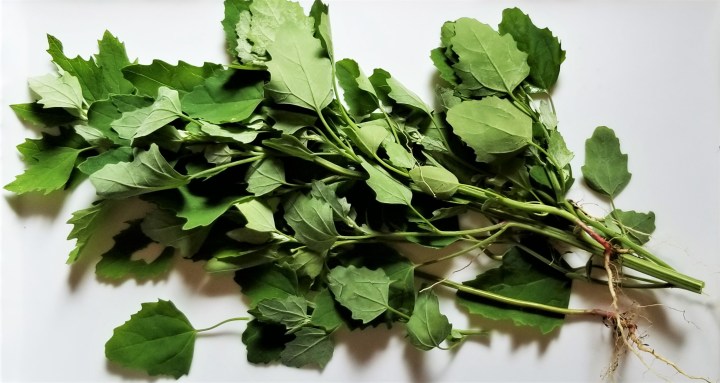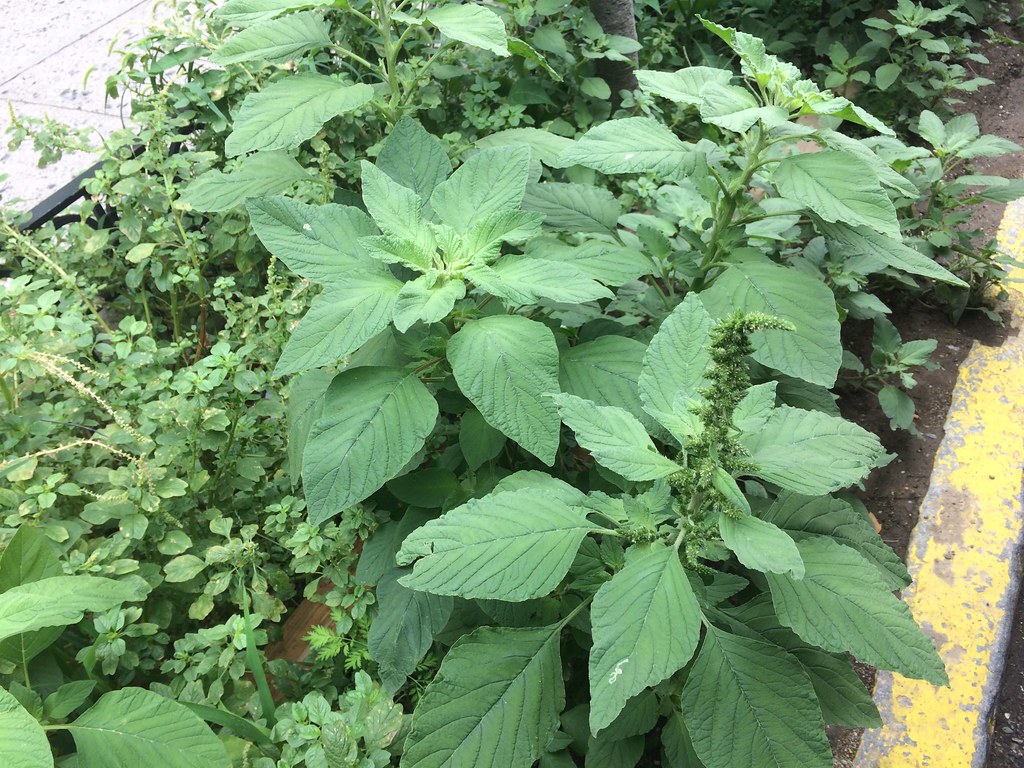
NOTE (July 9, 2022): In the original text of this post, I misidentified the plant pictured above as pigweed (Amaranthus retroflexus). The correct identification is lamb’s quarters (Chenopodium album), in the same Amaranthaceae family as pigweed, but from a different genus. Many thanks to Eilene @ Myricopia, for kindly pointing out the mistake. The edited text below, reflects the correction.
Quelite is a generic name in Mexico, from the Nahuatl quilitl – edible green; a close translation to English would be “potherb”. Originally, the name referred just to native plants, such as huauzontle (Chenopodium nuttalliae), and epazote (Dysphania ambrosioides), both of which I have mentioned in previous posts; during and after colonial times, new edible greens brought from Spain and around the world have been making the list, such as purslane, radish leaf and watercress.
Pigweed (Amaranthus retroflexus) originally grew as a weed in fields across the American continent, and it is now found all around the world. It is similar to other members of the amaranth family, and also has an ancient history as a food staple in several indigenous cultures. For example, the Tarahumara in Northern Mexico collect plants with pliant stems and tender leaves, and then boil them and fry them in lard, or add them to corn dough for green tamales or tortillas. In central Mexico, pigweed and other plants from the same family are called quintoniles, from the Nahuatl forms quilitl – quelite, a pot herb, and tlatotonill – sun bathed. Pigweed leaves have a slightly sour flavour, with a somewhat coarse feeling in the mouth, which much improves upon cooking. It is generally safe to forage and eat any pigweed, provided they were not sprayed with pesticides; in the backyard garden, simply harvest plants that are not too old:
In my garden, I found lamb’s quarters (Chenopodium album), also known as white goosefoot and, generically with other species of the same genus, wild spinach. In Spanish, it has many names, such as cenizo, quinhuilla, bledo, and, in Mexico, also generically, is simply called “quelite de cocina” – “kitchen potherb.” These plants have the advantage of not having any poisonous look-alikes, and are high in vitamins, such as A and C, also containing riboflavin, niacin, potassium, calcium, and manganese:

In the Mexican state of Tlaxcala, quintoniles are featured in several traditional dishes, such as soups, stews as tacos, and in my kitchen, I will substitute with my “quelites de cocina” (lamb’s quarters) in some of these recipes. More on that in my next post.
I am joining Cee’s Flower of the Day (FOTD) challenge for July 6, 2022.









I am glad that my nemesis from tending grandma’s garden has a use…this probably means that as it grows popular it will become delicate and prone to disease just like the other food stuffs we plant.
LikeLike
Well, I don’t know; purslane is popular now, and it keeps invading like crazy. But eating the enemy makes you feel like all the weeding has a purpose.
LikeLike
I love quelites and verdolagas/purselane. I keep some patches of both in my garden. Thanks for sharing!
Instagram @treeatoneslingshotsusa
LikeLiked by 1 person
Thank you, Antonio!
LikeLike